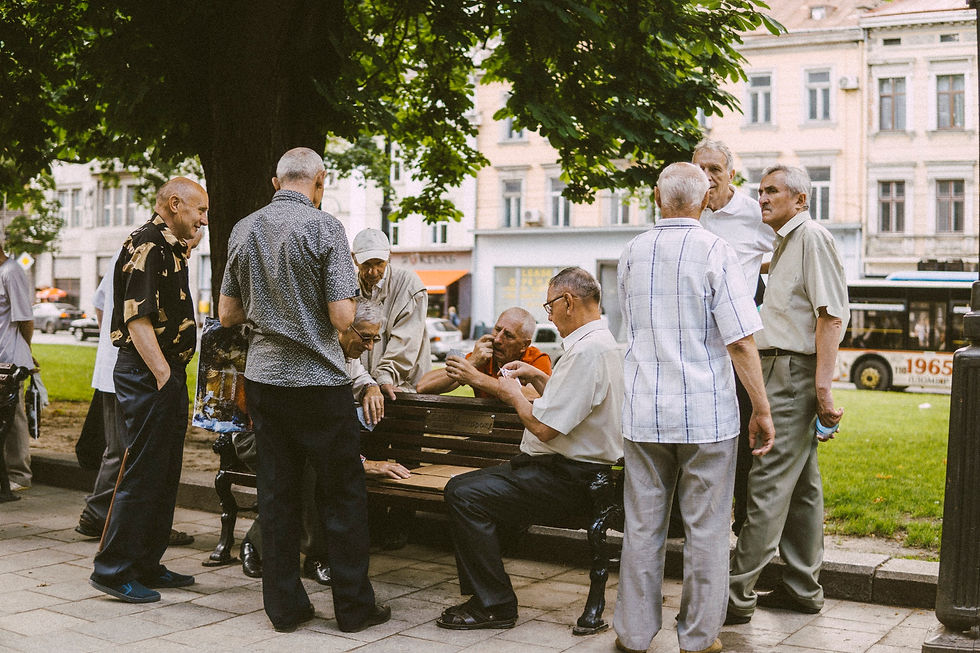
Ageing Urbanism
in Singapore
Kiosk Design
The Challenge
Singapore's median age was 36, and the life expectancy was 80.
By 2050, the median age would be 54, the same as Italy and Japan, countries with the highest elderly population.
Source: Singapore Department of Statistics (DOS). 2005.
How might we create a synergy between physical safety and mobility, social integration, and spatial stimulation to help the elderly adapt to old age.
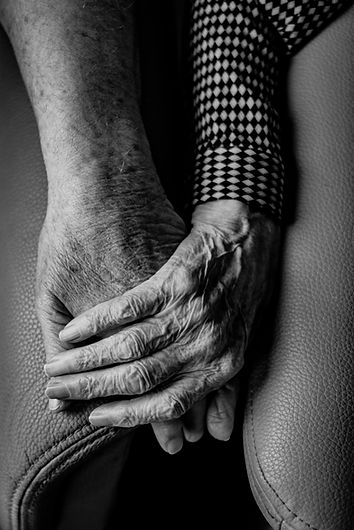

Design Iteration 2
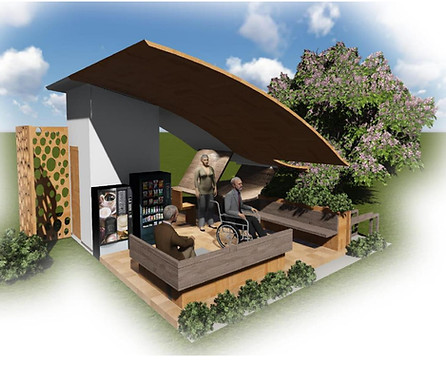
Design Iteration 1
The Solution
There is a need to have a holistic approach in designing spaces for the elderly to form social ties, improve physical and emotional well-being and bring a sense of community integration.
The kiosk design can help create interactive and fun spaces for the elderly and provide basic utilities like drinking water and a toilet.
RESEARCH
A critical approach to understanding the context of "ageing".
Meet Cristine
" I am working at a pastry shop to make cookies for the Chinese New Year. I have a lot of friends, and a lot of them are way younger than me."
Source: User Interview
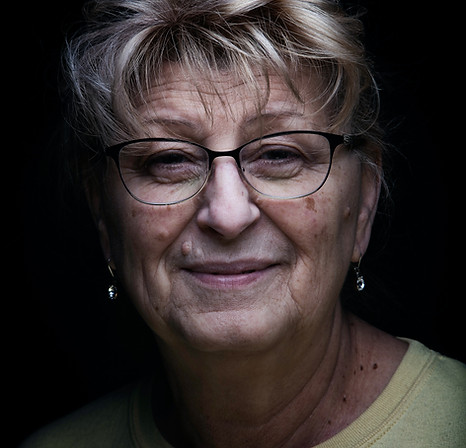
Who are today's old, older and oldest adults? What are their expectations, abilities, fears, and dreams? What are the social, cultural, economic, legislative, spatial, design, and technological issues faced by the elderly population? Are the public and healthcare spaces designed today efficient enough to sustain the elderly population of tomorrow?
Independence
Mobility
Fear
Memory
Loneliness
Hope
Respect
Control
Rejuvenation
Meet Mary
" I have a heart condition so I try to be careful and not make my kids worry. One of my daughters comes to visit every Saturday while the other two children also visit often. We have a tenant in the house who is a student. He also gives us company from time to time.
Source: User Interview

ANALYSIS
Identifying an "urban grain" in the existing HDB housing environments.


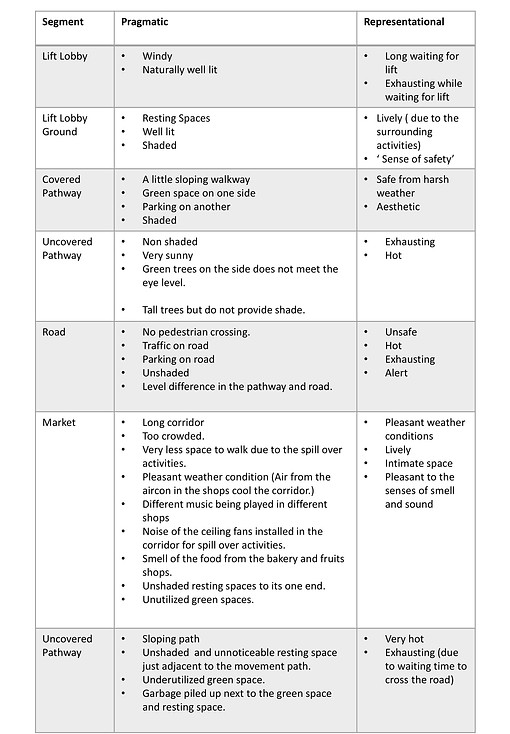
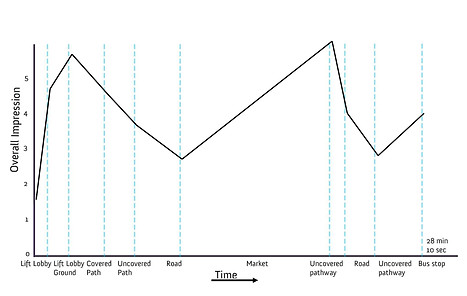
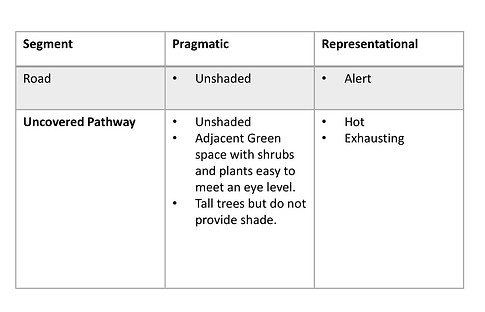
Qualitative Analysis of the route and the segments based on four key parameters.




ANALYSIS
Identifying a strategic location for the kiosk

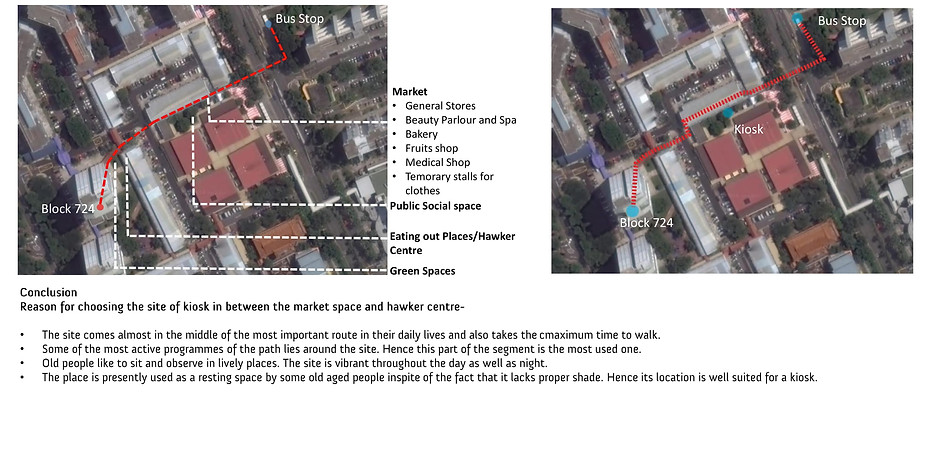
DESIGN
Iteration 1
Designing a healthful housing environment for the elderly.

The kiosk is designed to give the elderly both private and interactive spaces along with providing basic utilities.
The elderly may want to stretch a little while resting. So the idea was to design spaces that would invite the elderly to enjoy it without getting conscious.
There also was the challenge of not prototyping this kiosk as an 'elderly kiosk' and creating a space that is universal yet focuses on the needs of the elderly.

USER FEEDBACK
The kiosk is located in front of a busy market.
How can we create spaces that are more dynamic and can adapt to different times of the day, occasions, users, etc?
DESIGN
Iteration 2
Designing a healthful housing environment for the elderly.
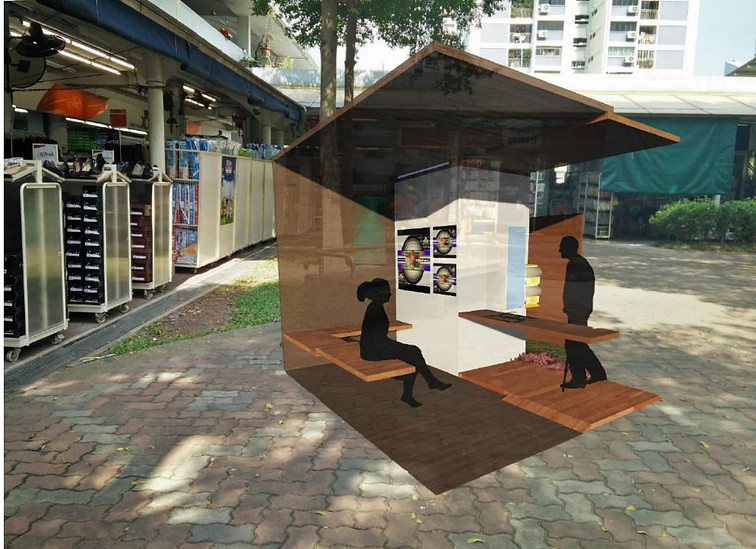
The smallest capsule of the kiosk (when completely folded) is supposed to invite the elderly
mainly through:
The screen wall would display health information, entertainment channels, etc. Also the elderly could take selfies using the wall screen that could be displayed throughout the day on one of the screens.
On the other side of the kiosk, there is a lucky draw vending machine. It would give away one small item every day to its lucky winner. Only the elderly would be allowed to participate as it would work after checking the authorization of its user.
The design revolves around creating interesting spaces that could expand and contract according to the needs.


Kiosk Unfolded Stage 1
The kiosk can be expanded into a small pantry with a mini-fridge and a cooking top for the elderly to cook something and perhaps use the kiosk as a stall in the busy marketplace.
Kiosk Unfolded Stage 2
The kiosk can further be expanded into an interactive space. The wall screen that was earlier serving the passerby could then hold some programs and shows for a small gathering.